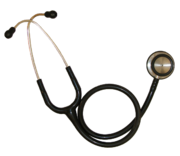Tablets In Hospitals
Monifa Thomas at the Chicago Sun Times reports on the latest must-have device at Chicago hospitals—iPads:
Not only does the iPad allow doctors to view electronic medical records, wherever they are, it also gives them a way to show patients their X-rays, EKGs and other lab tests on an easy-to-read screen. Plus, it's lighter and has a longer battery life than many laptops, making it convenient for doctors to take on rounds.
Within the next month, the University of Chicago Medical Center plans to provide iPads to all of its internal medicine residents, expanding on a pilot program launched earlier this year. Similarly, Loyola University Medical Center in Maywood has given iPads to all of its orthopedic residents as part of a pilot program.
This is a nice window into the interplay between technological progress and health care costs. Even though the price of electronic devices tends to fall pretty quickly, if hospitals across the country start replacing clipboards and paper with iPads then that's going to increase costs. But making health care cheaper per se isn't the only thing in life. If getting more expensive gadgets into doctors hands actually leads to major improvements in health outcomes, then the expense will be very much worthwhile.
That said, in most industries one thing people try to do with new technology is find ways to reduce their cost structure. Initially, that leads to higher profits. But as competing firms also adopt cost-cutting technologies, the dominant strategy involves price cuts and the profit rate returns to the pre-innovation equilibrium and consumers benefit. The US health care system, however, is set up so as to strongly discourage price competition. So hospitals are relatively unlikely to focus on the ways in which new technology can reduce their cost structure, and even if they do this they're unlikely to end up passing reductions on to consumers in the form of lower prices.


Matthew Yglesias's Blog
- Matthew Yglesias's profile
- 72 followers




